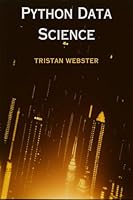
Text Analysis with R for Students of Literature
- Length: 194 pages
- Edition: 2014
- Language: English
- Publisher: Springer
- Publication Date: 2014-07-03
- ISBN-10: 3319031635
- ISBN-13: 9783319031637
- Sales Rank: #836016 (See Top 100 Books)
Text Analysis with R for Students of Literature is written with students and scholars of literature in mind but will be applicable to other humanists and social scientists wishing to extend their methodological tool kit to include quantitative and computational approaches to the study of text. Computation provides access to information in text that we simply cannot gather using traditional qualitative methods of close reading and human synthesis. Text Analysis with R for Students of Literature provides a practical introduction to computational text analysis using the open source programming language R. R is extremely popular throughout the sciences and because of its accessibility, R is now used increasingly in other research areas. Readers begin working with text right away and each chapter works through a new technique or process such that readers gain a broad exposure to core R procedures and a basic understanding of the possibilities of computational text analysis at both the micro and macro scale. Each chapter builds on the previous as readers move from small scale “microanalysis” of single texts to large scale “macroanalysis” of text corpora, and each chapter concludes with a set of practice exercises that reinforce and expand upon the chapter lessons. The book’s focus is on making the technical palatable and making the technical useful and immediately gratifying.
Table of Contents
Part I Microanalysis
Chapter 1 R Basics
Chapter 2 First Foray into Text Analysis with R
Chapter 3 Accessing and Comparing Word Frequency Data
Chapter 4 Token Distribution Analysis
Chapter 5 Correlation
Part II Mesoanalysis
Chapter 6 Measures of Lexical Variety
Chapter 7 Hapax Richness
Chapter 8 Do It KWIC
Chapter 9 Do It KWIC (Better)
Chapter 10 Text Quality, Text Variety, and Parsing XML
Part III Macroanalysis
Chapter 11 Clustering
Chapter 12 Classification
Chapter 13 Topic Modeling
Appendix A Variable Scope Example
Appendix B The LDA Buffet
Appendix C Start up Code
Appendix D R Resources for Further Reading







